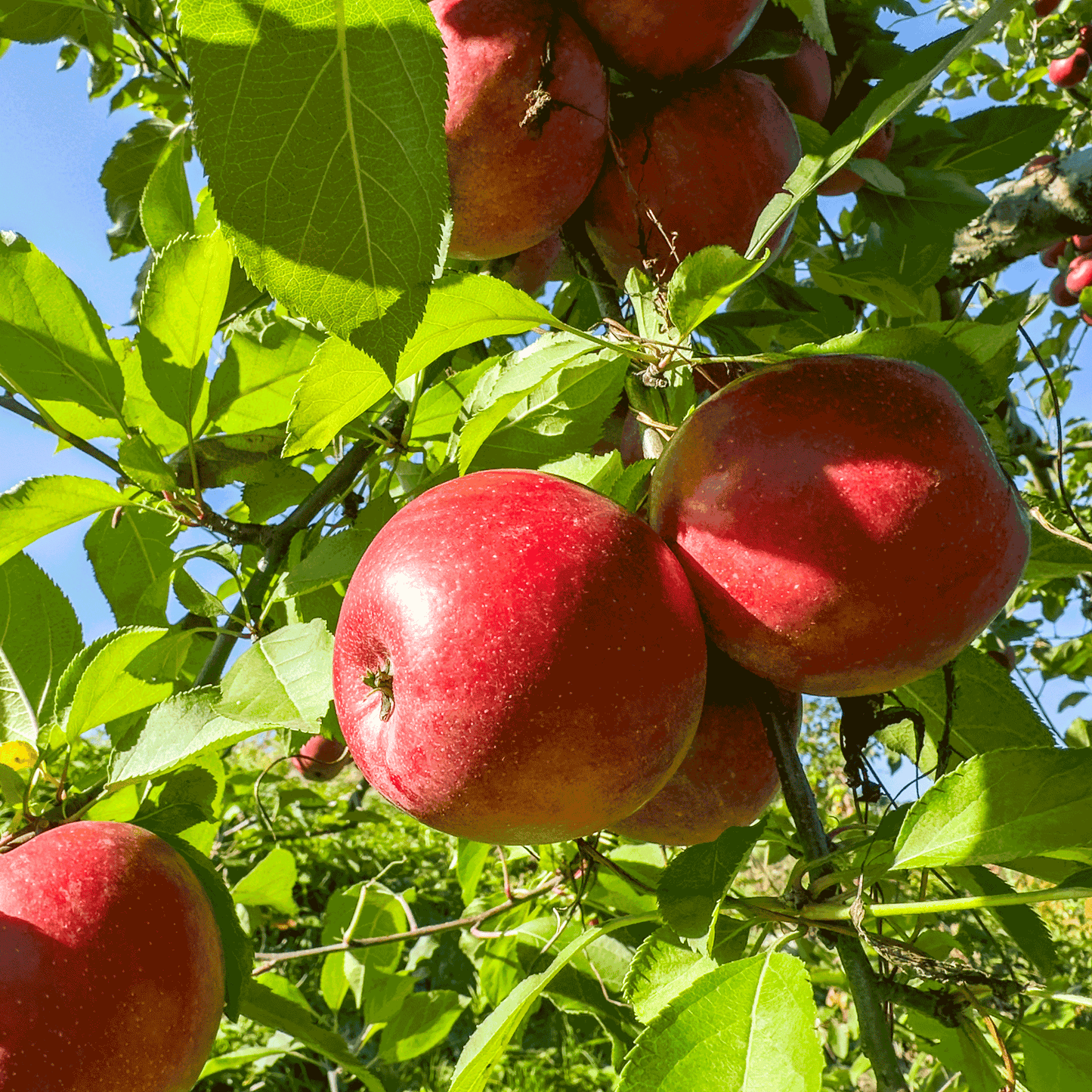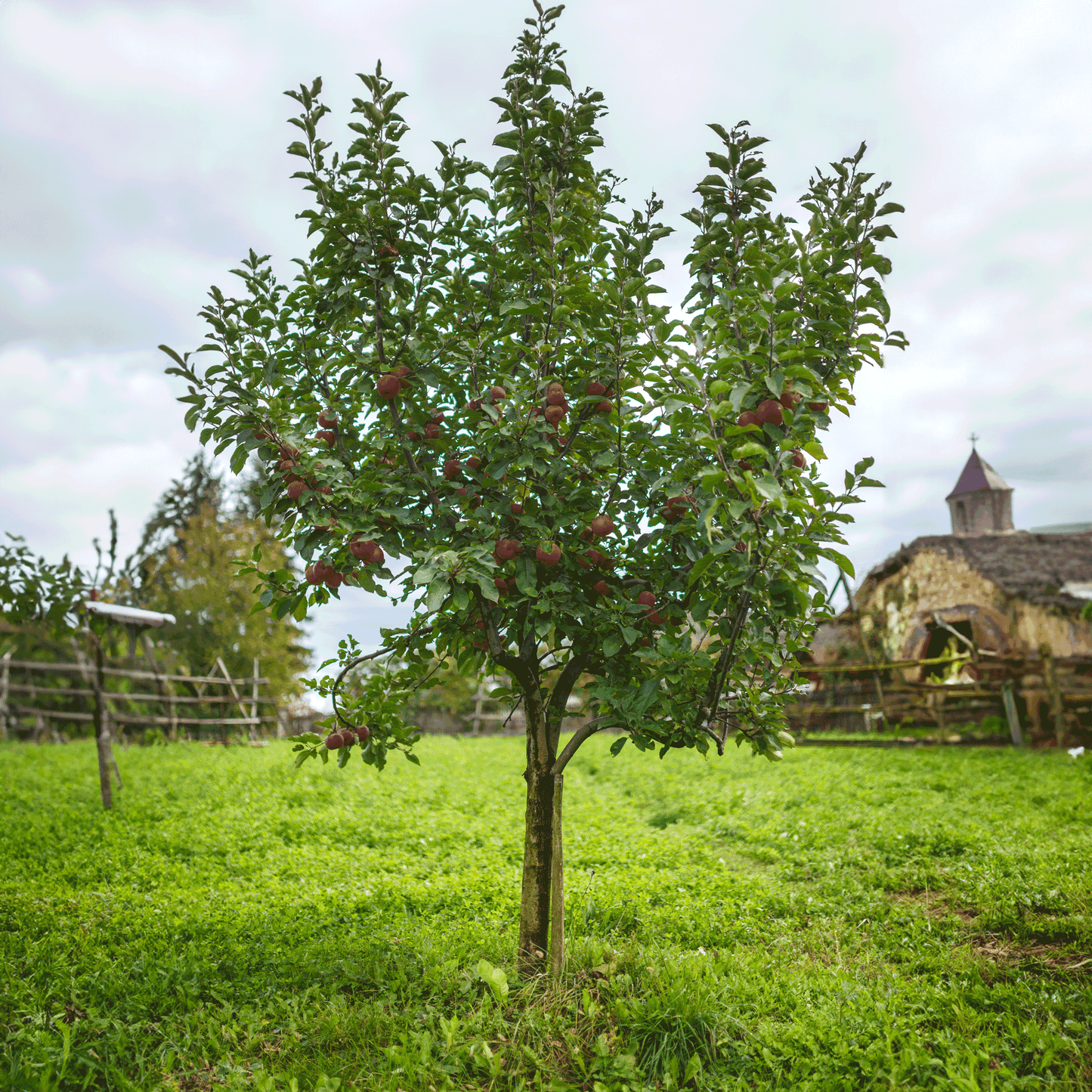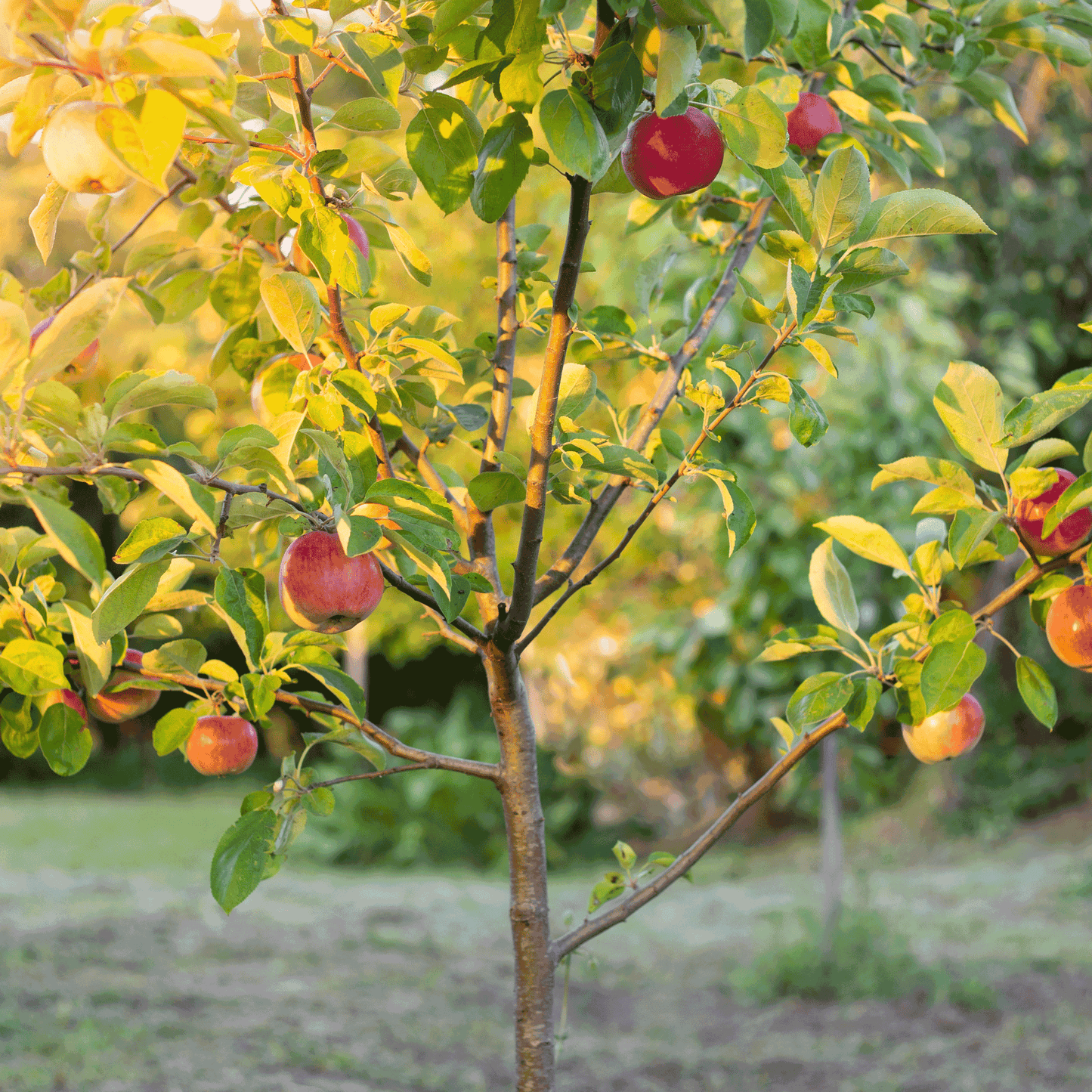Fuji Apple Tree
Fuji Apple Tree
SKU:EDB-APP-FUJ-45-5G
Meet Your New Favorite Apple: The Fuji!
Craving a crunch? Look no further! The Fuji Apple Tree is here to satisfy your taste buds with its sweet, juicy apples that are perfect for snacking, baking, or bobbing. Grown right in your backyard, these apples are a hit at any family gathering or solo snack time.
Easy-Peasy Planting!
Don't have a green thumb? No worries! The Fuji Apple Tree is low-maintenance and adaptable, making it a breeze for beginners. Plus, it's a generous giver, with a bountiful harvest year after year.
Not Just Delicious, But Dazzling!
But wait, there's more! Beyond the delectable fruit, this tree is a stunner in any landscape. With its beautiful blossoms in spring and lush green foliage, it's a treat for the eyes as well as the palate.
Small Space? No Problem!
Worried about space? The Fuji Apple Tree is perfectly sized for smaller gardens or can be potted on patios. It's not just a tree, it's a versatile companion for your outdoor space.



Product Details
-
Product Category
Edibles
-
Product Subcategory:
Apple Trees
-
Botanical Name:
Malus domestica 'Fuji'
-
Does Not Ship To:
AZ, CA, ID, OR, WA
-
Mature Height:
10-15 ft.
-
Mature Width:
10-15 ft.
-
Growing Zone:
4-9 outdoors
-
Indoor Growing:
-
Sunlight:
Full-Part Sun
-
Growth Rate:
Moderate
-
Harvest Time:
September-October
-
Bloom Time:
Spring

Planting Directions
<h2>Planting a Fuji Apple Tree</h2>
<ul>
<li><strong>Choose a location:</strong> Full sun, well-draining soil.</li>
<li><strong>Spacing:</strong> 15-20 feet apart from other trees.</li>
<li><strong>Planting Time:</strong> Early spring or late fall.</li>
<li><strong>Planting:</strong> Dig a hole twice as wide and the same depth as the root ball. Place the tree in the hole, spreading roots. Backfill with soil and water thoroughly.</li>
</ul>
<h2>Care and Maintenance</h2>
<ul>
<li><strong>Watering:</strong> Regularly, especially during dry spells. Keep soil moist but not waterlogged.</li>
<li><strong>Mulching:</strong> Apply 2-3 inches of mulch to retain moisture and regulate soil temperature.</li>
<li><strong>Fertilization:</strong> Use a balanced fertilizer in early spring before new growth begins.</li>
<li><strong>Pruning:</strong> Prune in winter to remove dead or crossing branches and to shape the tree.</li>
<li><strong>Pest Control:</strong> Monitor for pests and diseases. Use appropriate treatments as needed.</li>
<li><strong>Thinning:</strong> Thin excess fruit early in the season to promote larger, healthier apples.</li>
</ul>
<h2>Pollination</h2>
<p>Fuji apple trees are not self-pollinating. Plant with another apple variety that blooms at the same time for cross-pollination and fruit set.</p>
<h2>Harvesting</h2>
<p>Harvest Fuji apples when they are fully colored and the flesh is firm. This typically occurs in late September to October. Taste test for sweetness to ensure they are ready.</p>

FAQs
<h2>FAQs for the Fuji Apple Trees</h2>
<h3>1. How do I plant a Fuji Apple Tree?</h3>
<ol>
<li><strong>Choose the right location:</strong> Fuji Apple Trees need full sun, at least 6 hours of direct sunlight per day, and well-draining soil.</li>
<li><strong>Prepare the soil:</strong> Mix compost or well-rotted manure into the planting site to improve soil fertility and structure.</li>
<li><strong>Dig a hole:</strong> Make the hole twice as wide and just as deep as the root ball of your tree.</li>
<li><strong>Plant the tree:</strong> Remove the tree from its container and gently loosen the roots. Place the tree in the hole, ensuring it's standing straight. Fill the hole with soil, and gently tamp down to remove air pockets.</li>
<li><strong>Water thoroughly:</strong> After planting, water the tree deeply to help establish roots.</li>
<li><strong>Mulch:</strong> Apply a 2-3 inch layer of mulch around the base of the tree to retain moisture and regulate soil temperature.</li>
</ol>
<h3>2. How do I fertilize my Fuji Apple Tree?</h3>
<ul>
<li><strong>Timing:</strong> Fertilize in early spring before new growth appears and again in late spring or early summer.</li>
<li><strong>Type of fertilizer:</strong> Use a balanced fertilizer, like a 10-10-10 or a 20-20-20 formula, or a specific fruit tree fertilizer according to package instructions.</li>
<li><strong>Application:</strong> Spread the fertilizer evenly under the canopy of the tree, avoiding direct contact with the trunk. Water the tree after fertilizing to help distribute the nutrients.</li>
</ul>
<h3>3. How do I ensure pollination of my Fuji Apple Tree?</h3>
<p><strong>Fuji Apple Trees are not self-pollinating,</strong> so you will need a second apple tree of a different variety that blooms at the same time for cross-pollination. Plant the second tree within 50 feet of your Fuji Apple Tree to ensure bees and other pollinators can easily transfer pollen between them.</p>
<h3>4. How do I water my Fuji Apple Tree?</h3>
<ul>
<li><strong>Regular watering:</strong> Young trees need 1-2 inches of water per week, either from rainfall or supplemental watering. Water deeply once a week, or more frequently during hot, dry periods.</li>
<li><strong>Adjust for mature trees:</strong> Mature trees have deeper root systems and may require less frequent watering. Monitor soil moisture and adjust your watering schedule accordingly.</li>
</ul>
<h3>5. When and how do I harvest Fuji Apples?</h3>
<ul>
<li><strong>Timing:</strong> Fuji Apples are typically ready to harvest in late September to October. The exact timing can vary based on your climate and the current year's weather conditions.</li>
<li><strong>Signs of ripeness:</strong> Apples are ripe when they have full color (for the variety) and a slightly softer feel at the top near the stem. Taste testing a few apples can also be a good indicator.</li>
<li><strong>Harvesting:</strong> Gently twist the apple upwards and give a slight pull. Avoid pulling straight down on the fruit to prevent damaging the apple or the tree.</li>
</ul>
<p>By following these guidelines, you can successfully plant, grow, and enjoy the fruits of your Fuji Apple Tree. Remember, patience and consistent care are key to nurturing healthy and productive fruit trees. Happy gardening!</p>




